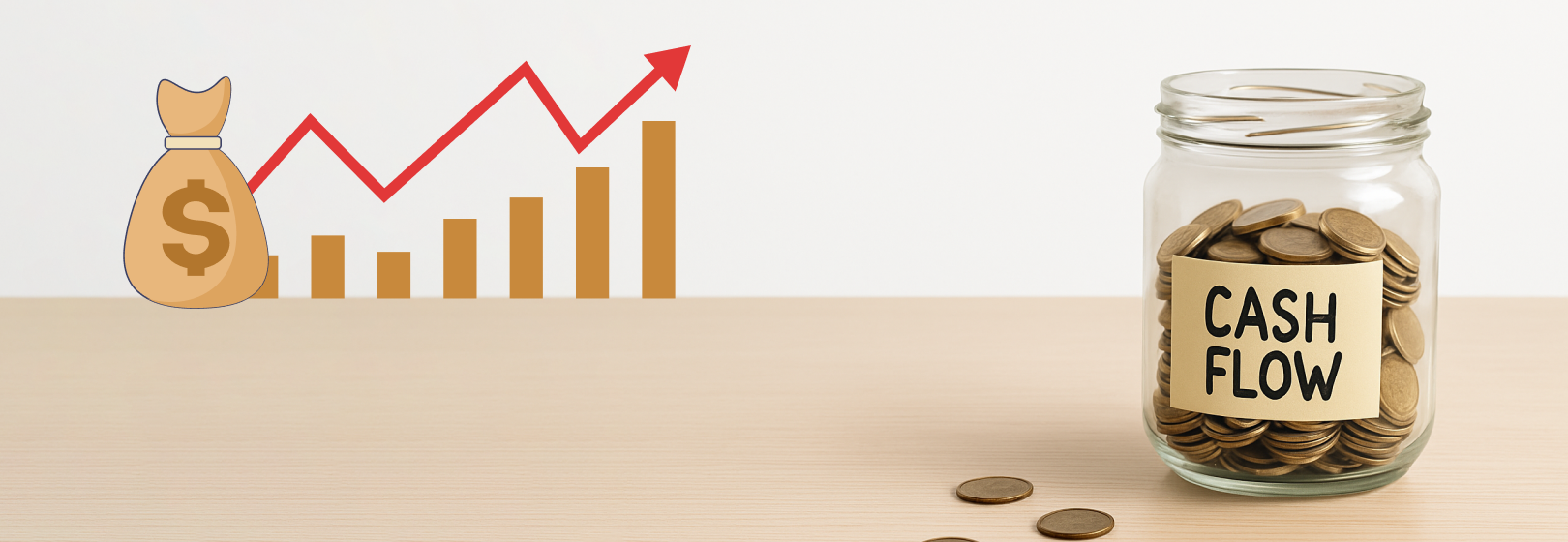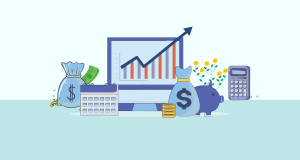In business, the numbers drive you crazy, and it’s easy to chase the profit. However, rising profit doesn’t always mean success. A company with strong earnings on paper can still face challenges making its bills if cash isn’t flowing in from operations correctly. That’s why cash flow management is one of the essential parts of maintaining a successful business—and cash flow forecasting is the tool that will take you there.
Whether you’re a fledgling startup founder looking to stay afloat your first year or a seasoned business owner charting your next expansion, knowing your future cash position can be the difference between success and failure. Cash flow forecasting allows you to anticipate what is about to happen, avoid financial surprises and make more intelligent, confident decisions.
In this blog, we’ll take a look at some of the benefits of cash flow forecasting, and how this powerful practice can allow you to stay ahead, stay agile and stay in business — whatever the future holds.
Enhanced Planning and Financial Decision Making
The clear picture of future cash position is one of the key benefits that cash flow forecasting brings for businesses. You can make financial decisions that make sense by predicting when money will come in and when it will go out.
For example, if your forecast indicates you will have cash left over in three months, you might choose to invest in new equipment, hire extra staff, or do more marketing. On the other hand, if a deficit is forecast, you can take proactive steps — for example, tightening up expenses or securing financing — to lessen the damage.
In short, cash flow forecasting changes decision making from reactive to proactive.
Enhances Budget Accuracy
Budgeting goes alongside forecasting. A good cash flow forecast helps businesses build better budgets because businesses can now match planned income and expenses through real-time projected numbers.
Forecasting provides a mechanism for refreshing your budget to newer realities, instead of relying purely on historical data that does not take into account these realities and underlying operational changes. This dynamic method helps your business become more nimble and ready for opportunities and challenges.
Guarantees That Expenses Are Paid on Time
Late payments to suppliers, employees, or creditors damage your reputation and can harm relationships. Once you have a cash flow forecast, you’re always going to know when cash is coming in and you can schedule your payments accordingly.
Not only does this assist with continuing great business relationships but also protects against penalties, interest charges, or disruptions down the supply chain related to unpaid invoices.
Decreases the Risk of Bankruptcy
The most important reason to project cash flow is to prevent bankruptcy. On paper, a business can be making a profit but may still run out of cash if it is not liquid enough to pay its day-to-day debts.
Cash flow forecasting is an early warning system. By flagging potential cash gaps early, it allows you to source emergency funds or make operational changes to avoid facing a financial cliff-edge.
Enhances Investor and Lender Transparency
So, whether you’re seeking investment, applying for a business loan or pitching to investors, making a detailed cash flow forecast will prove that you know your business and you’re serious about managing it well.
For investors and lenders a business that can show it is in control financially and has strategic foresight. A solid, accurate forecast lends credibility to you and your business and will help your chances of obtaining funding or favourable loan terms.
Read More: Efficient Cash Management
Supports Strategic Growth
Do you have a new product launch in the works? Entering a new market? Scaling up your operations? All of these initiatives need funding — and the timing of that funding is crucial.
Cash flow forecasting shows you whether your business will be able to support these activities or if you need to raise capital. It also ensures your timing around growth moves corresponds with your strongest financial cycles to minimize risk and maximize success.
Helps Manage Seasonal Fluctuations
Most businesses have seasonal variation in income. In other words, when does your type of business experience spikes as many retailers do during the holidays such as construction companies often do in winter.
Cash flow forecasting lets you anticipate these trends. By preparing for those slow periods in advance, you can manage costs more effectively, stockpile cash reserves during busy times, and sidestep unpleasant surprises in slow months.
Permits Better Management of Inventories
Cash Flow Forecasting Affects Inventory Decisions For product-based businesses, overextending liquidity in terms of cash tied up in inventory can be draining, especially if sales begin to stall.
Forecasting allows you to find the sweet spot between not having enough stock to meet demand and over-purchasing. This helps enhance working capital leverage for the company while minimizing storage and holding costs.
Promotes Team Accountability
Sharing key information from the cash flow forecast with your team creates an environment of transparency and ownership. Departments that recognize how their actions affect cash flow can make more prudent business decisions.
For instance, the sales team could orient towards quicker payments and a reduction in receivables, whilst procurement can delay non-essential purchases in lean periods. It’s a collaborative process that bolsters broader financial well-being.
Read More: What is Cash Flow Forecasting?
Prepares You for “What-If” Scenarios
Uncertainty is the name of the game in business. Cash flow forecasting allows you to model various “what-if” scenarios to project how specific events—losing a major client, encountering unanticipated expenses, or winning a big contract—would affect your cash position.
Such scenario planning builds resilience. It allows you to test strategies and develop contingency plans, so you’re never surprised by an unexpected change in circumstances.
Saves Time and Reduces Stress
Running into the habit of creating a cash flow forecast, although can take up time if you are doing it for the first time, but in the later run save time. You can solve problems ahead of time instead of a scrambling to tackle them as they pop up.
And having a clear sense of where your cash is, and where it’s going, keeps the guesswork — and the anxiety — out of managing your finances. It enables business owners to have peace of mind and focus on growing the business instead of surviving.
Helps with Compliance and Tax Planning
Many aspects of running a business, but complying with tax obligations is one of the most important. Cash flow forecasting allows you to allocate money for GST, income tax, payroll tax, and other liabilities, so you’re not caught off guard when due dates hit.
It also gives more room for tax planning. You can make projections of your anticipated tax due and take advantage of any early payment discounts or defer costs to minimize your taxable income.
Conclusion
Cash flow forecasting isn’t merely an accounting task, however, it’s a strategic business weapon that can enable you plan, adapt and scale with confidence. And the advantages are many and deep, from protecting against solvency to opening doors for investment.
Whether you use simple spreadsheets or advanced forecasting software, the key is consistency. Have it be a regular part of your budget, review it often and update as things change.
In today’s volatile and competitive climate, those businesses that are aware of and manage their cash flow will be the ones most likely to survive and indeed flourish. So, if you haven’t done so already, now’s the time to make cash flow forecasting a cornerstone of your business strategy.
Frequently Asked Questions About Cash Flow Forecasting
What is the difference between cash flow forecasting and budgeting?
In comparison, budgeting is a much bigger financial strategy that projects your revenue and costs, normally yearly. Cash flow forecasting is typically more dynamic and updated more regularly to take into account things that may change in real time.
How frequently do I need to update my cash flow forecast?
That all depends on how big and complicated your business is. For the majority of small to medium businesses updating forecasts in a weekly or monthly cadence is ideal. If you notice fast changes, a tight cash flow, or run a seasonal business, then update even more regularly — weekly or daily — as needed for better visibility and control.
Can I do cash flow forecasting, without accounting software?
Yes, a lot of companies use Excel or Google Sheets to get started with cash flow forecasting. These are flexible, customizable tools. However, there comes a stage when, if your business grows, you should consider specific forecasting software that automates calculations, connects to your accounting system, and gives greater insights.


